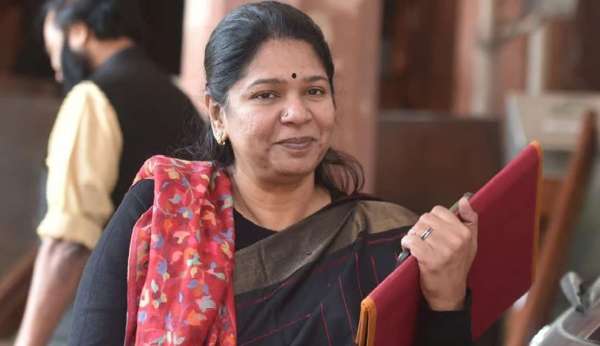
New Delhi: Union Finance Minister Nirmala Sitharaman was criticized by Dravida Munnetra Kazhagam (DMK) MP Kanimozhi on Tuesday for failing to address important issues during the Lok Sabha debate on the Union Budget. She claimed that Sitharaman’s response was politically motivated and ignored numerous crucial questions posed by MPs.

“There were a lot of important questions raised, so I don’t think it was a response to the discussion that took place in Parliament,” Kanimozhi told the media report. However, the finance minister was really making it more political by responding to specific state governments. This is what she was aiming for. Many of the points that were brought up were not addressed by her.
Akhilesh Yadav, the leader of the Samajwadi Party (SP) and a former chief minister of Uttar Pradesh, said that the government “did not provide” any funding for the Maha Kumbh, which is being held after 144 years.
NK Premachandran, a member of the Revolutionary Socialist Party, called Finance Minister Sitharaman’s response “totally disappointing.”
“The majority of our concerns have not been addressed, and her statement regarding the state’s allocation is also factually incorrect,” he told ANI. She keeps insisting that it’s getting higher. Indeed, it is rising, but it is decreasing in relation to total tax income. Even though the states were given 41% of the divisible pool by the finance commission, they are only receiving 33%. It is deteriorating.
The government is utilizing almost all of the borrowed funds to finance efficient capital expenditures, according to Finance Minister Nirmala Sitharaman, who had defended the government’s capital budget allocations.
In his response to the lengthy discussion of the 2025–26 budget in the Lok Sabha, Sitharaman said that effective capital expenditure is expected to be Rs 15.48 lakh crore, as opposed to Rs 13.18 lakh crore in the 2024–25 revised estimates.
In contrast to the fiscal deficit objective of 4.4% of GDP, she noted, effective capital expenditure for 2025–2026 is 4.3% of GDP.
Long-term fixed or physical assets are established by capital expenditures, or capex. Core capital expenditures and grants-in-aid to governments for the development of capital assets are both considered forms of effective capital expenditure. According to her, grants-in-aid for the establishment of capital assets help the states develop their capital assets even if they are included in the budget as revenue expenditures.
“The difference between the two is minimal,” she said, highlighting the fact that the government is funding efficient capital expenditures with almost all of the borrowed funds.
“Neither revenue expenditures, committed expenditures, nor any other similar reasons are being served by the borrowings. Only the creation of capital assets is being done with them. Therefore, in the next fiscal year, 2025–2026, the government plans to effectively finance capital expenditures using about 99 percent of borrowed resources,” she said.